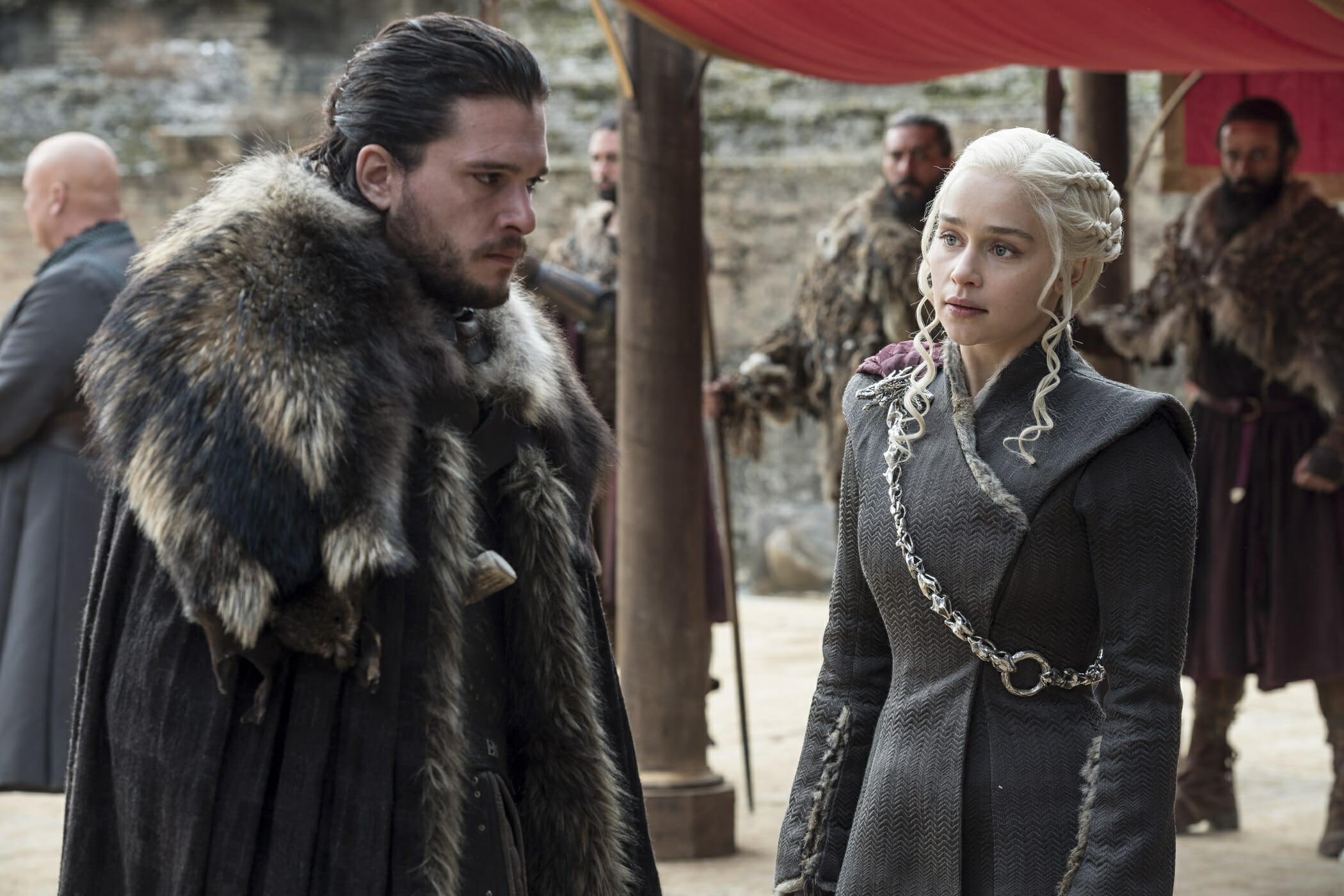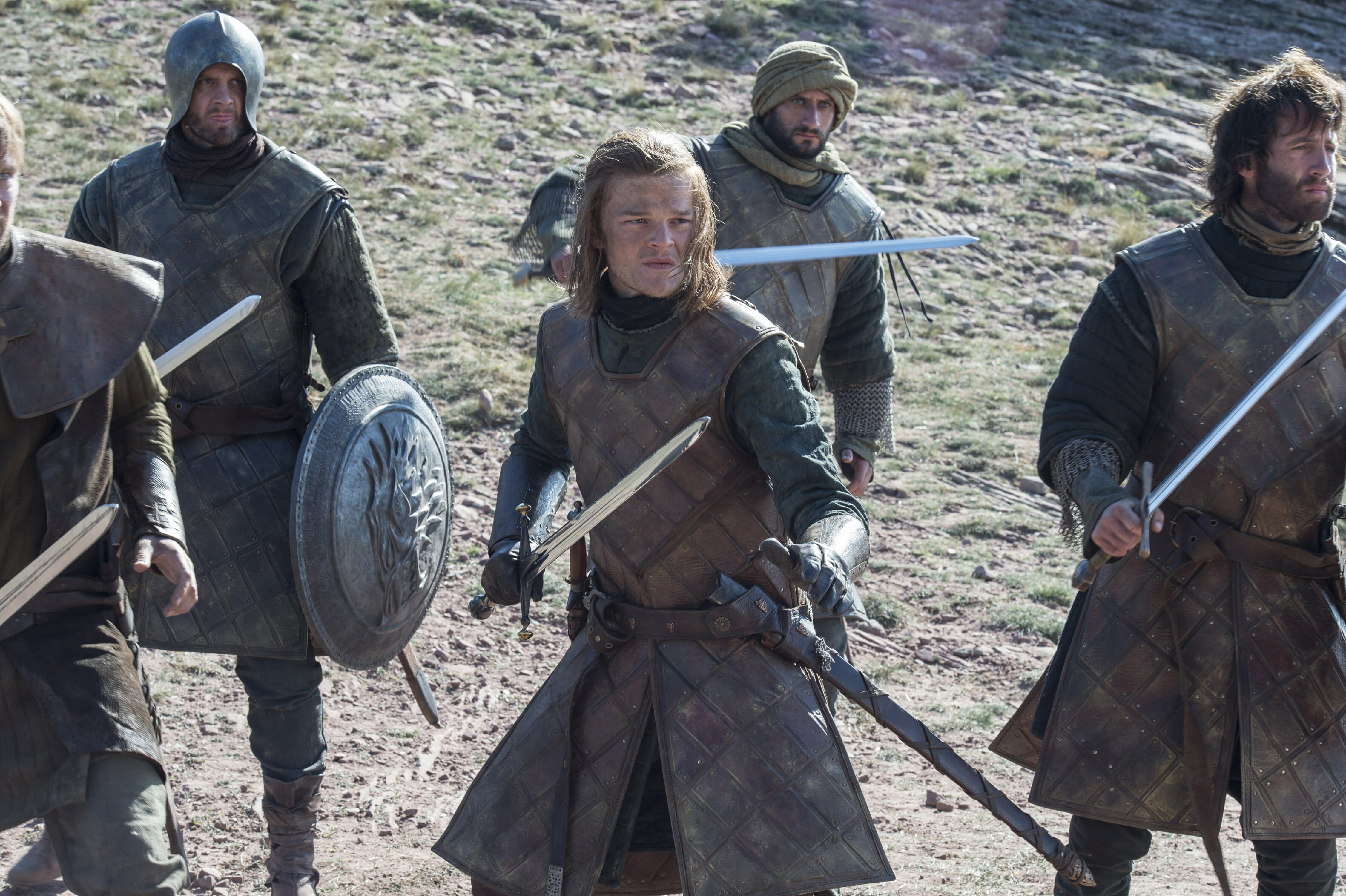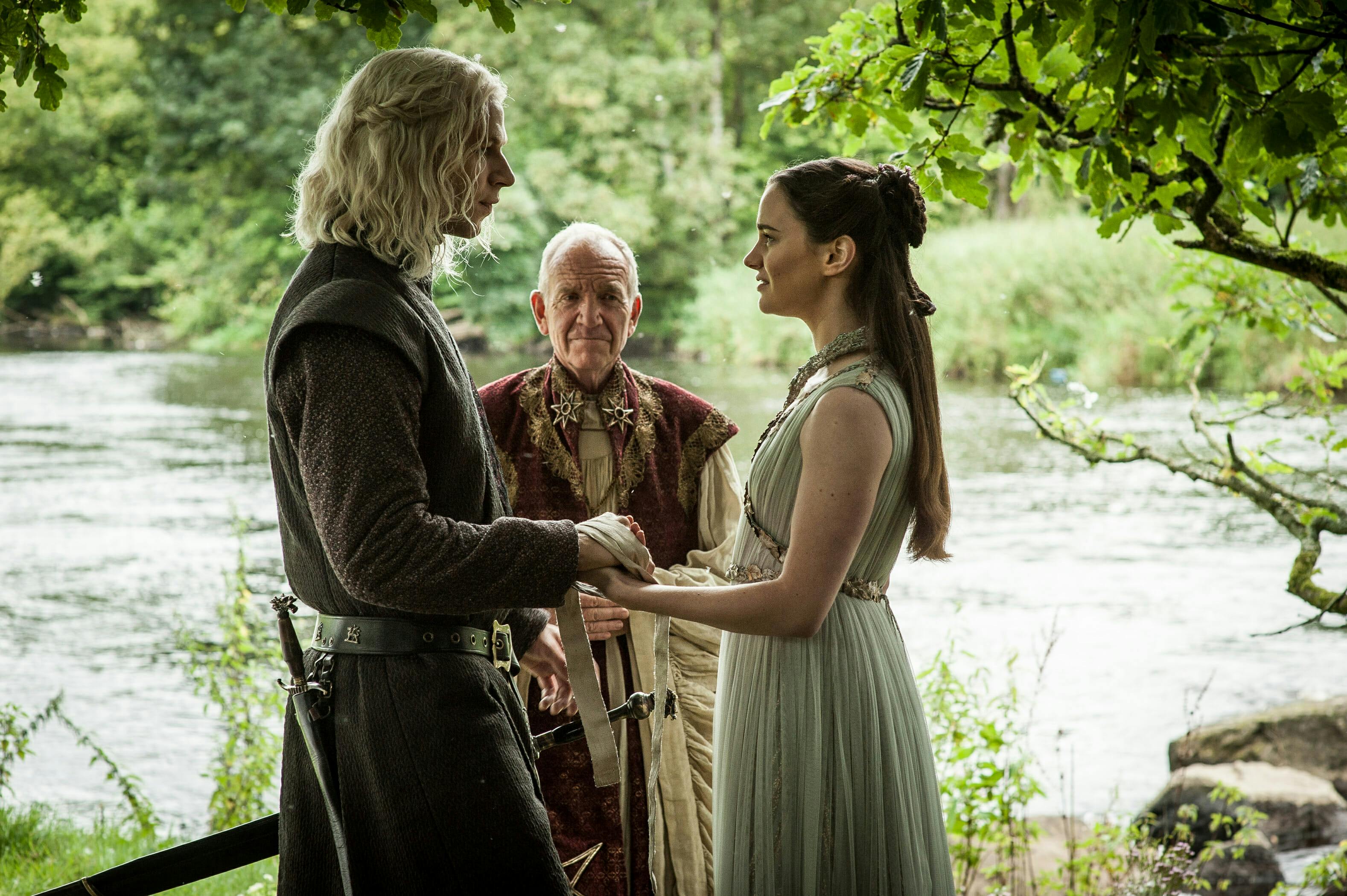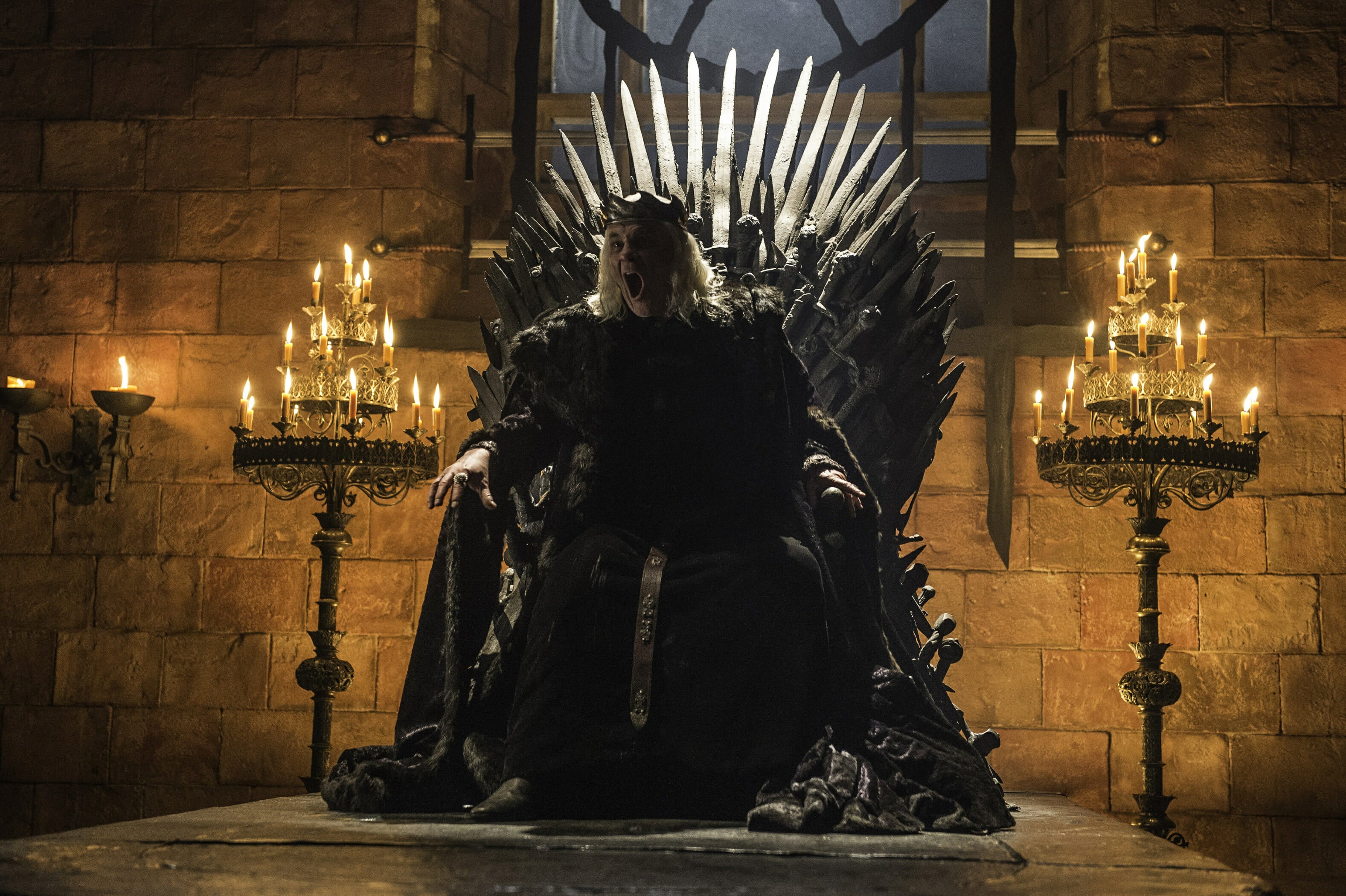Game of Thrones ended its seventh season with revelations and a stunning blow in the war between the living and the dead. And while we had long suspected who Jon Snow’s true parents were, the royal mic drop also shook up everything we knew about Robert’s Rebellion, the war that kickstarted Game of Thrones.
As Bran told a bewildered Samwell Tarly in the season 7 finale, Robert’s Rebellion—the war led by Robert Baratheon that marked the end of the Targaryen dynasty—“was built on a lie.” Everyone in Westeros knew about Robert’s Rebellion, whether they fought or lived through it or they grew up in its wake because of how it ended: with the nearly complete decimation of House Targaryen and Robert Baratheon sitting on the Iron Throne.
Like the Dance of the Dragons, we know both very much and very little about Robert’s Rebellion. We were given the structural benchmarks, the catalyst, and how it played out, but it’s only from a certain perspective. There’s still much more to parse through, especially tidbits like Jon’s parentage that have been revealed in the show but not in George R.R. Martin’s A Song of Ice and Fire. However, fans will eventually learn the full truth of what happened in Robert’s Rebellion. Martin noted as much in a blog post that shot down the idea of HBO making a Robert’s Rebellion Game of Thrones spin-off prequel.

“We’re not doing Robert’s Rebellion either,” Martin wrote in a May 2017 blog post. “I know thousands of you want that, I know there’s a petition… but by the time I finish writing A SONG OF ICE & FIRE, you will know every important thing that happened in Robert’s Rebellion. There would be no surprises or revelations left in such a show, just the acting out of conflicts whose resolutions you already know. That’s not a story I want to tell just now; it would feel too much like a twice-told tale.”
READ MORE:
- Everything revealed so far about George R.R. Martin’s ‘The Winds of Winter’
- Here’s everything we know about the ‘Game of Thrones’ spin-off prequels
- What we know so far about ‘Game of Thrones’ season 8
The larger consequences of that war continue to play out to this day. Mistrust grew between houses, friendships remained permanently fractured, and children grew up in exile or hidden from the truth of their heritage. And with just six episodes left, Jon Snow and Daenerys Targaryen may have to eventually confront the elephant in the room of which one of them will end up on the Iron Throne.
Why is it called Robert’s Rebellion?

History is written by the victors, and so much of what we know about Robert’s Rebellion comes from those who won it. Just look at the recollection of Robert’s Rebellion in The World of Ice and Fire, the encyclopedia where its in-universe author Maester Yandel caters to his audience—the King of the Seven Kingdoms—and flourishes Robert’s accomplishments.
Simply put, Robert’s Rebellion was his war. His vendetta with the Targaryens—particularly King Aerys II Targaryen’s eldest son Rhaegar—was personal because Robert believed that Rhaegar kidnapped and raped Robert’s betrothed, Lyanna Stark. Out of the three leaders of Robert’s Rebellion, he ultimately had the best claim to the Iron Throne. (Robert’s paternal grandmother was a Targaryen.) He killed his rival Rhaegar on the battlefield. And when it was all over, he ascended to the throne.
Like many wars, the name used depends on what side you’re on. According to Martin, the name wasn’t necessarily something that was set in stone. Some people called it Robert’s Rebellion while others (likely those who supported or were sympathetic to the Targaryens) called it the “War of the Usurper” because Robert took the throne from the rightful Targaryen rulers.
What led to Robert’s Rebellion?

The war that removed the Targaryens from power had a crystal clear catalyst, but those sides would have never come to blows—at that exact moment, anyway—if a number of factors didn’t tie in first. And those previous actions may have eventually led to certain characters’ demise. For that, you can look at the Tourney at Harrenhal, a grand tournament that brought many of the noble houses and knights together in one place.
With Aerys—who was becoming consumed by paranoia and suspected Rhaegar was trying to remove him from the throne—in attendance, it was even grander than it would have normally been. Aerys also oversaw the swearing in of Jaime Lannister into the Kingsguard, which Tywin Lannister saw as an insult toward House Lannister.
It’s also where Rhaegar Targaryen first met Lyanna Stark. What we do know is that when Rhaegar won the tournament, he crowned Lyanna (and not his wife Elia Martell) the queen of love and beauty, something that many—including Lyanna’s brothers and Robert Baratheon, her betrothed—took as an insult to Lyanna’s honor. It’s less clear, although fans have some theories, whether they had met even earlier.
Several months after the Tourney at Harrenhal, Rhaegar and Lyanna disappeared. Although we now know, thanks to Game of Thrones, that Rhaegar and Lyanna loved each other and married willingly, many believed that she had been kidnapped against her will and raped by Rhaegar. (Although Lyanna had been promised to Robert, she was not thrilled about the prospect having heard about Robert’s illegitimate children.) Her eldest brother Brandon, who had been on his way to Riverrun to marry Catelyn Tully, went to King’s Landing to get justice.
Unfortunately, it didn’t work out like that. Aerys had Brandon arrested and charged with treason, ordered Brandon and Lyanna’s father Rickard to King’s Landing to answer for his son’s crimes. As Jon Snow recounted in “The Queen’s Justice,” Aerys burned both Brandon and Rickard (a minor departure from the books, where only Rickard was burned to death) for their “crimes.”

Aerys then ordered Jon Arryn to give him the heads of his former wards Ned Stark (the new Lord of Winterfell) and Robert Baratheon, who were at the Eyrie. Jon Arryn refused and called his banners. After that, all hell broke loose.
What sides did the major houses choose in Robert’s Rebellion?
Like previous wars, Robert’s Rebellion threatened to split Westeros in two. For House Stark, Baratheon, and Arryn, the war was personal: Jon Arryn aligned with the two young men he helped foster, Ned lost his father and brother by Aerys’ hand, and both Ned and Robert were trying to get Lyanna back from Rhaegar. House Targaryen sided with their own while House Martell’s support for the Targaryens was personal because of Rhaegar’s wife, Elia Martell, and their two children, who Aerys was keeping hostage.
House Tully supported the rebellion, during which Catelyn Tully married Ned after the murder of Brandon Stark, the man she was supposed to marry; Jon Arryn married Catelyn’s sister, Lysa Tully, in the same ceremony. Houses Tarly and Tyrell supported the Targaryens. And some waited until the end was near to declare sides: House Lannister, House Frey, and House Greyjoy all waited until after the consequential Battle of the Trident to side with Robert.
READ MORE:
- The mystery of the Night King, the true enemy on ‘Game of Thrones’
- How do you kill a dragon on ‘Game of Thrones’?
- Dance of the Dragons: Behind the ‘Game of Thrones’ civil war
How did Robert’s Rebellion end?

The warring sides clashed throughout Westeros for several months, but the two most consequential events occurred at the end of the war. One of them took out Rhaegar Targaryen. The other took out the king.
The Battle of the Trident turned the tide for Robert’s army. Although the Targaryens had more men, Robert’s army had more experience, but it also allowed Robert to meet Rhaegar face-to-face The two fought one another in single combat before Robert killed Rhaegar with his warhammer. Robert didn’t escape from that battle unscathed. His injuries were severe enough that he allowed Ned to lead the armies onward.
After that, it was onto King’s Landing. By then, families who had stayed out of the fray (including House Frey) joined Robert’s side as the war started to wind down. King Aerys sent Viserys and his wife Rhaella to Dragonstone but kept Elia Martell and her children in King’s Landing. Aerys appointed a pyromancer his new Hand of the King and wanted to burn King’s Landing to the ground with wildfire. The Lannister army took control of the city after letting Tywin and his army in, and having learned of Aerys’ plan to “burn it all” with wildfire, Jaime Lannister killed Aerys, the Hand of the King, and every pyromancer who had a hand to stop it from happening. And Ser Gregor Clegane—aka the Mountain—raped Elia Martell and killed her and her children.
What was the fallout of Robert’s Rebellion?

Robert Baratheon may have gotten hold of the Iron Throne in the end, but it doesn’t mean it was a happy ending for him or anyone else involved. (For a glimpse, watch all of Game of Thrones.)
Ned and Robert were never quite the same after the rebellion, and not just because Robert became king. Ned was angry with Robert for ordering the deaths of Rhaegar and Elia’s two young children—a rift that only healed after Lyanna’s death—and Robert’s wrath was enough of a threat that Lyanna made Ned promise to protect her newborn son and hide him from Robert. Once they reunited in A Game of Thrones, Ned quit the small council rather than take part in a plot to send assassins to kill a pregnant Daenerys Targaryen.
Robert was unhappy as well. He loved Lyanna Stark (or, as Ned suspected, the idea of her) and took part in a rebellion to get her back from Rhaegar, but in the end, Lyanna died anyway. Robert married Cersei Lannister, and it was an unhappy marriage right up until the very end. Allies stopped trusting one another, making it ripe for some (like Littlefinger) to take full advantage, and the Martells—still outraged about the murder of Elia Martell and her children—secretly vowed revenge.
And across the Narrow Sea, a couple of Targaryens in exile dreamed of one day taking the Iron Throne. With all of the chaos in Westeros that spawned from Robert’s death and everything that followed, that throne he once strove to sit on might be the least of everyone’s worries.


